BY NINA CHIKANOV
As mentioned in my general course reflection (read), the classes I took abroad gave me a unique opportunity to learn from the city. I actually think that I know more about Spanish history now than I do about American history—which may be a bit embarrassing—due to the level of cultural understanding needed to fully engage with the subject material in the courses.
In the case of my class, “Negotiating Identities in Madrid: Gender and Sexuality in Urban Space”, the most relevant event to understanding contemporary Spain is the global economic crisis of 2008 and the subsequent construction boom of the Spanish housing / project market.
In the wake of the economic crisis, Spain was in the process of rapid construction – all of which suddenly halted and resulted in abandoned housing developments, projects, unfinished roads, etc. (if you’re interested in seeing how this unfolded visually, check out this website that compares satellite images from different Spanish villages before and after the boom…pretty wild).
Basically, there was a lot of unused or abandoned space, and because of the economic crisis there was an uprising of frustrated people. The political climate was buzzing in Spain and in Madrid around the time of the crisis, and years of witnessing the unemployment rate rise under seemingly delayed governmental responses culminated in the reclaiming of public space by various citizens’ initiatives on May 15, 2011 in Sol (Madrid’s city center).
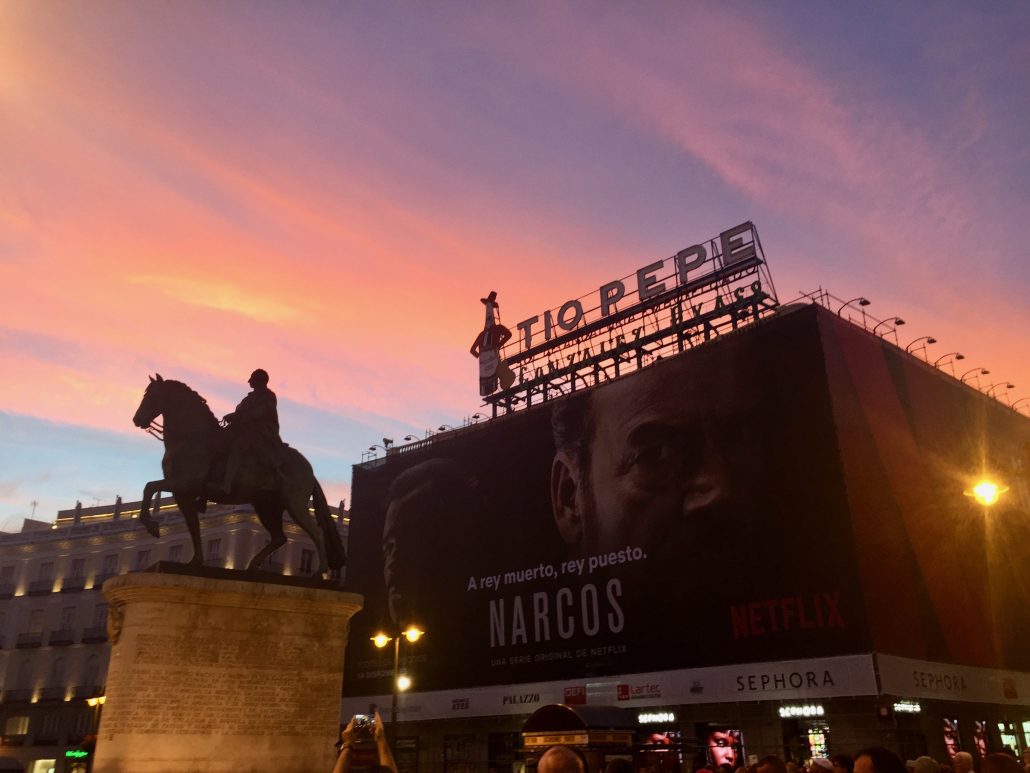
The centerpiece of Puerta del Sol
While I don’t want to focus too much on this event, 15M (wiki) is significant to Madrid’s culture and was an important turning point for how communities organize and reclaim public space today. After 15M, even more groups came out to reclaim the unused public space for their neighborhoods and communities, many of which were alive and functioning during my semester abroad.
Out of these neighborhood spaces, my favorite one to hang out in was Campo de Cebada, located conveniently close to my homestay in Barrio de La Latina. Coinciding with the beginning of 15M, Campo de Cebada opened its doors officially on May 15, 2011 and repurposed a courtyard that was originally meant to be a multi-purpose sports center before the construction halted.
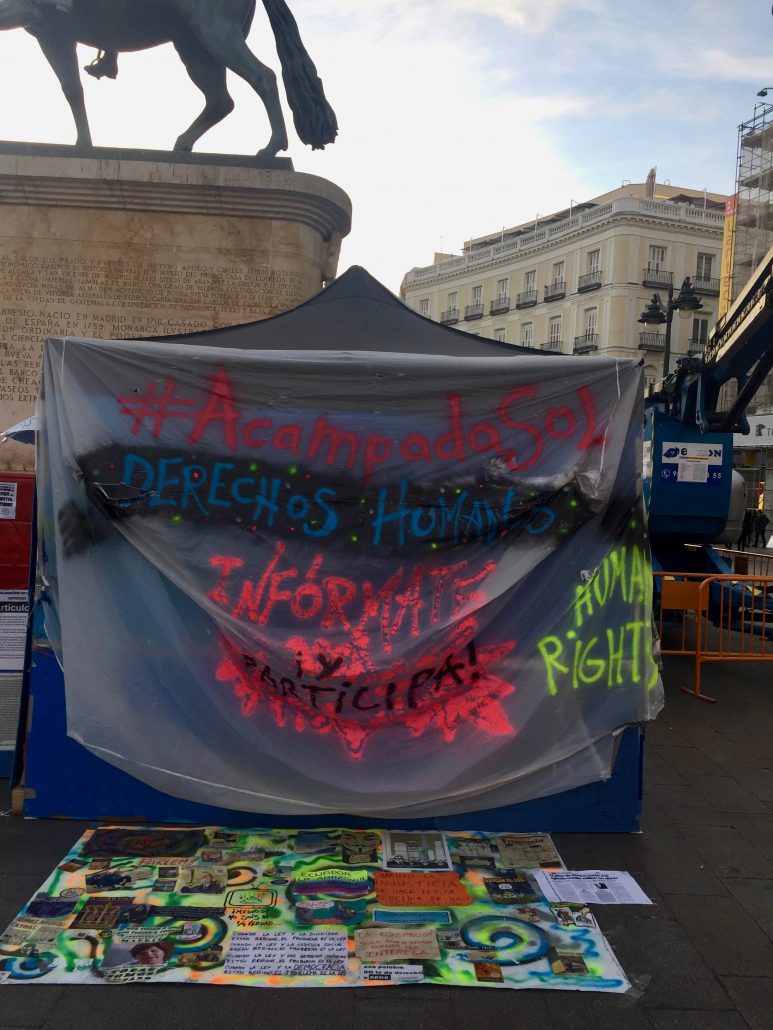
A demonstration referencing the events of 15M in Sol
The neighbors who crafted this space were inspired to reclaim it after an intervention by the “La Noche en Blanco” initiative that temporarily transformed the plaza into a rainforest with an open pool. After the intervention was taken down, many wanted to continue using and enjoying the
space and wrote a series of demands requesting public right to the space until the City Council offered plans for new community facilities. This re-appropriation, therefore, stemmed from an inherently legal manner, where the neighborhood collective agreed to recreate the space as soon as construction was ready to renew.
In the meantime, they installed a public garden, made places for people to sit out of recycled wood and materials, championed a rotating leadership system led by general assembly, and avoided any exchange of money or formulation of a commercial space (meaning that most contributions to the space were material or service-based instead of monetary).
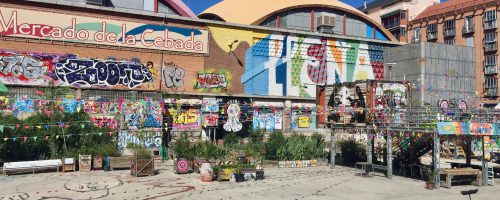
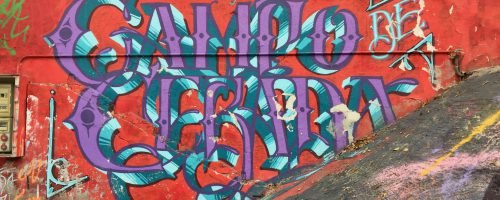
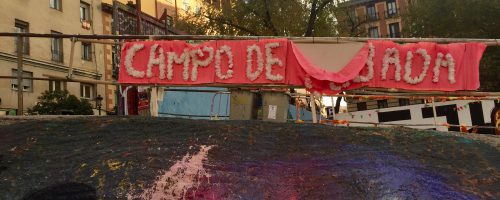
The inside walls of the plaza are covered by constantly changing murals and large artworks. There is a basketball/soccer court in the middle of the space and a central wooden barrack that slightly resembles a treehouse. While there were no theatre performances in the Fall, the plaza also hosted makeshift outdoor performances for the community in the past and even held TEDx Madrid within the space.
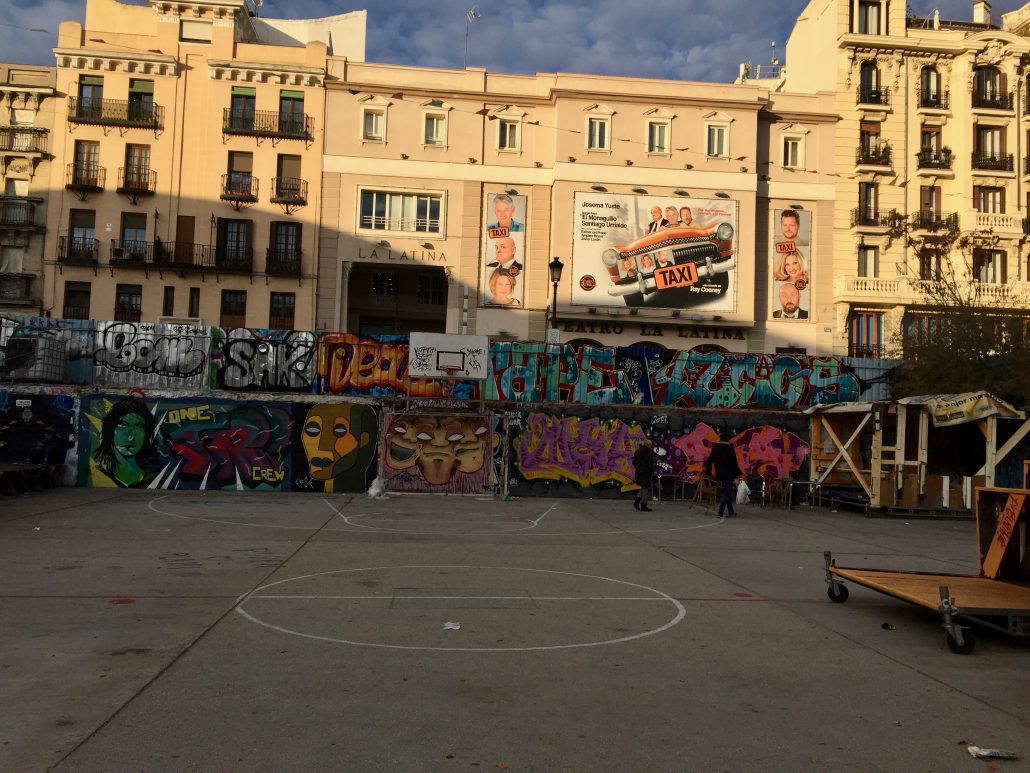
Over the past four months, the plaza served as a casual hangout spot for me and my friends, fostering a care-free, welcoming, cheerful atmosphere. It was comforting to know that for the short amount of time that I was in the Madrid community, there was an alternative space for me to exist and explore outside the hustle and bustle of the center.
Unfortunately, Campo de Cebada reached the end of its lifespan towards the end of my semester abroad in December of 2017 to make way for the newly planned sports pavilion in the same space. They invited those who could to take a plant from the community garden home with them as a way to keep a little piece of the movement with them. Although I could not physically keep a plant, this plaza forever has a place in my heart and in my Madrid experience.
Another favorite neighborhood space is called Esta es una Plaza! (EEUP for short). Their history is a bit more militant than Campo de Cebada, as they seized the empty plot of land before requesting a temporary permit to the space. They were actually forcibly evicted many times over their lifespan before finally reaching an agreement with the city, who initially did not want anything to do with them. With a bit of struggle, they pushed through to create the space in existence today, which previously was an empty dirty path in between apartments. Effectively empty space.
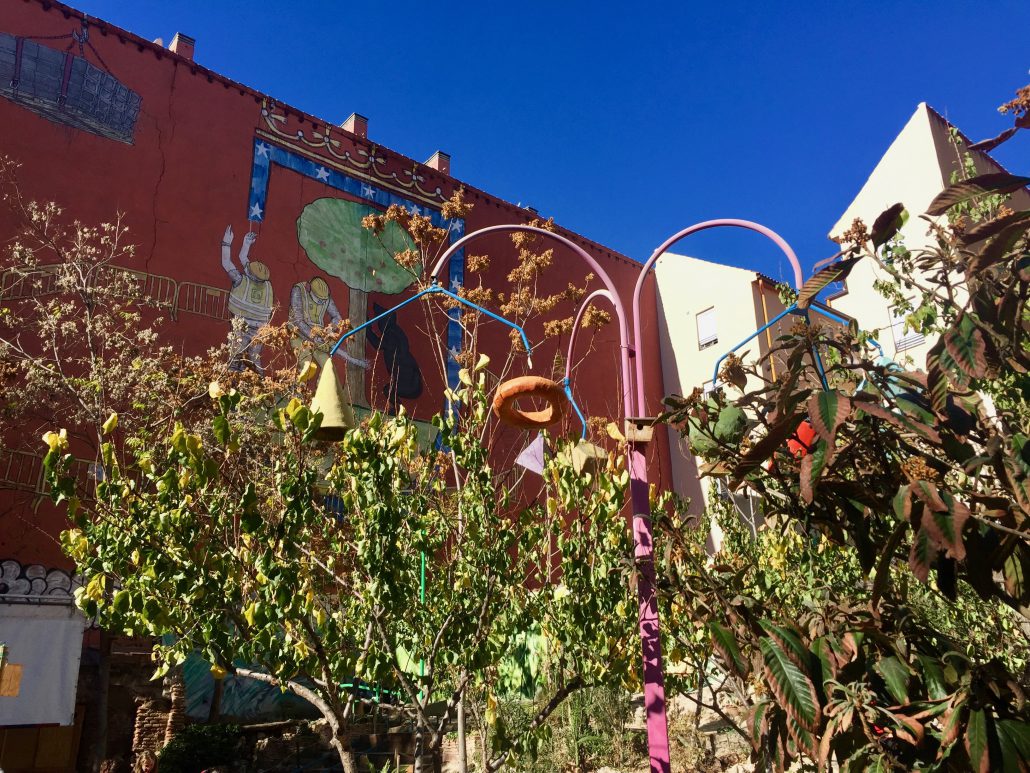
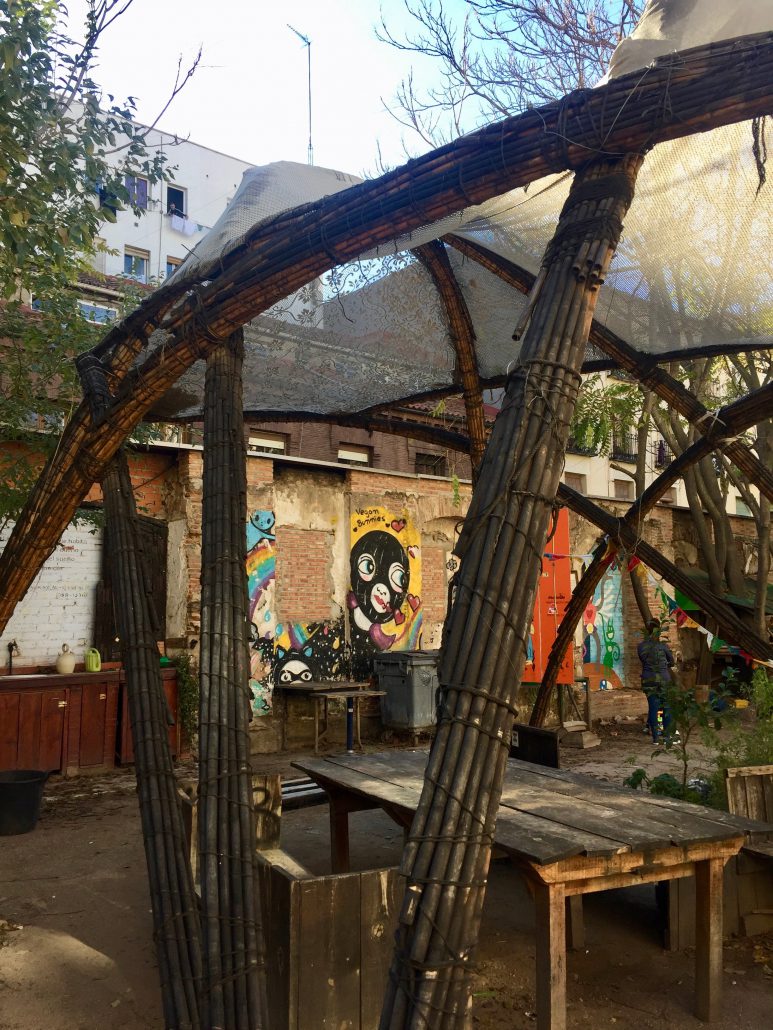
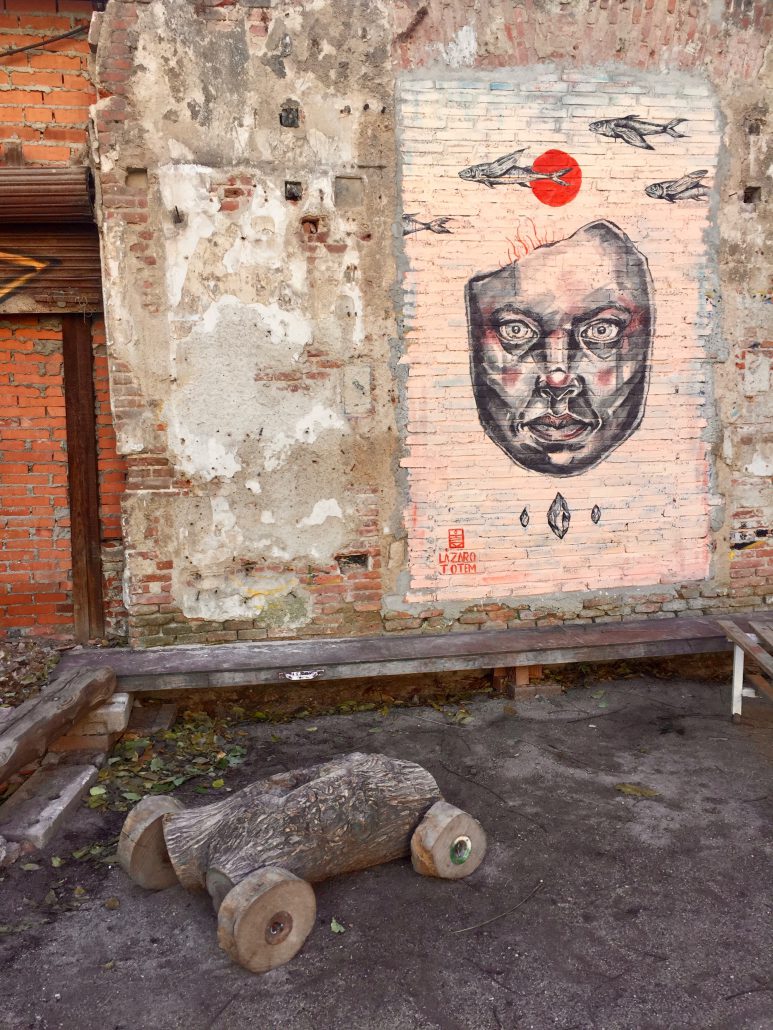
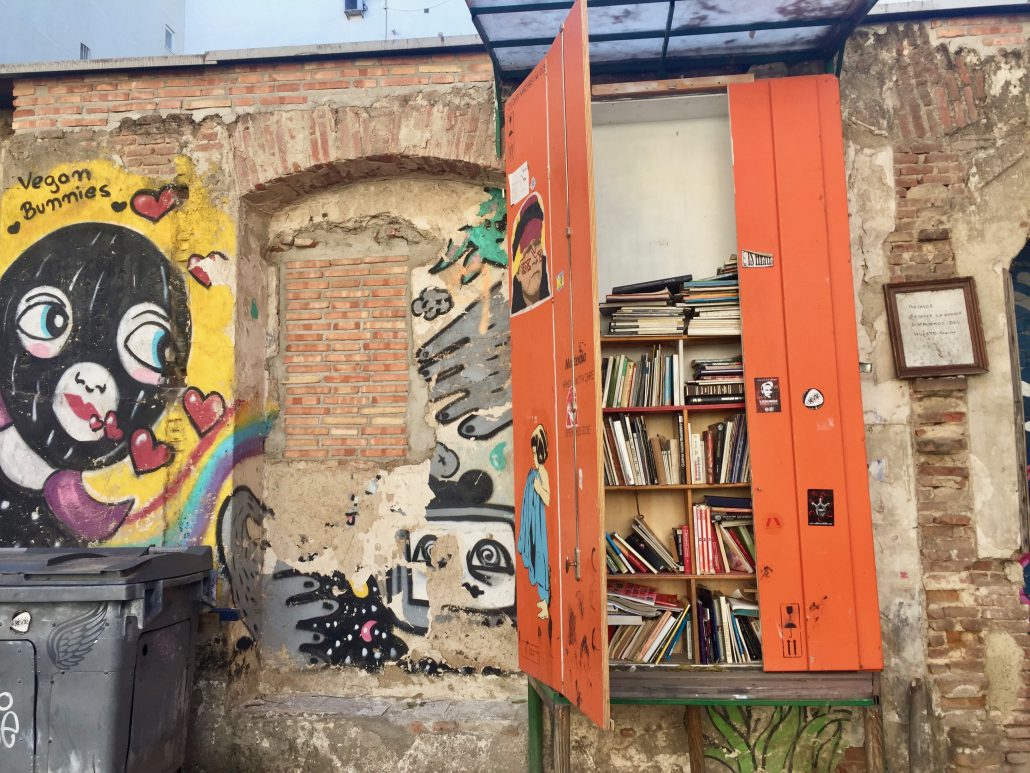
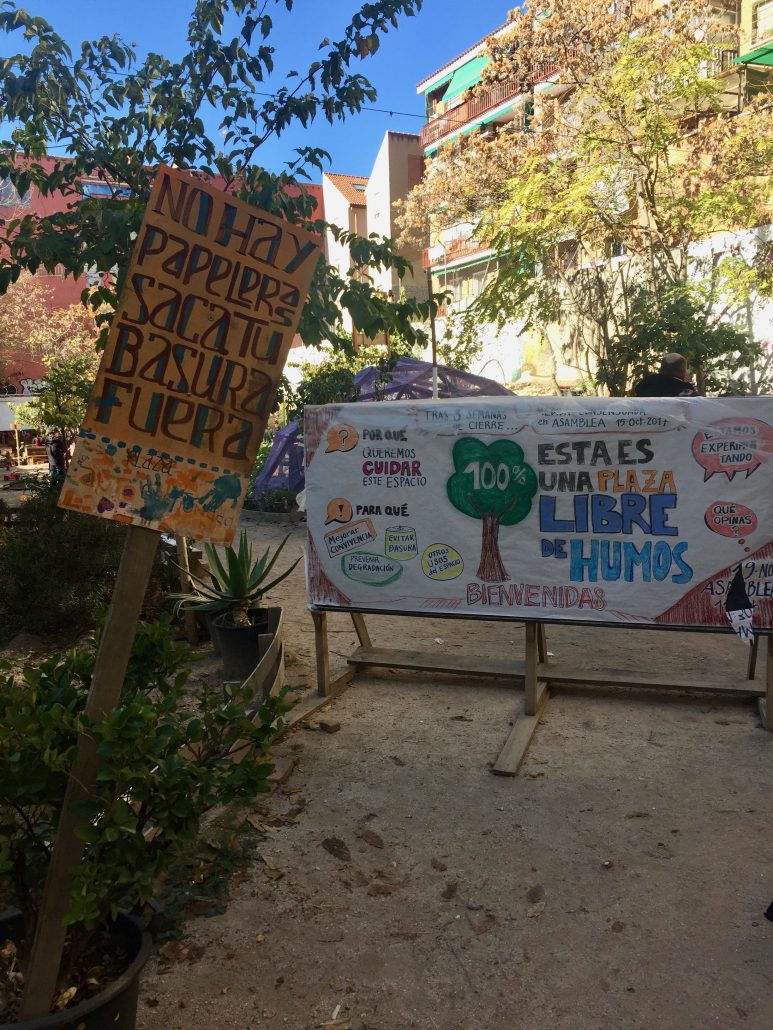
EEUP differs from Campo de Cebada in the fact that it is less defined by the murals on the internal walls (even though these are also present and pleasantly interactive) and focuses more on the gardening aspects and the family spaces. There are multiple swing sets set up, a space for donated books and trays, and a large center table with an overhang that provides shade. The demographic at EEUP is definitely more family-based whereas Campo de Cebada is a wider mix with many young people.
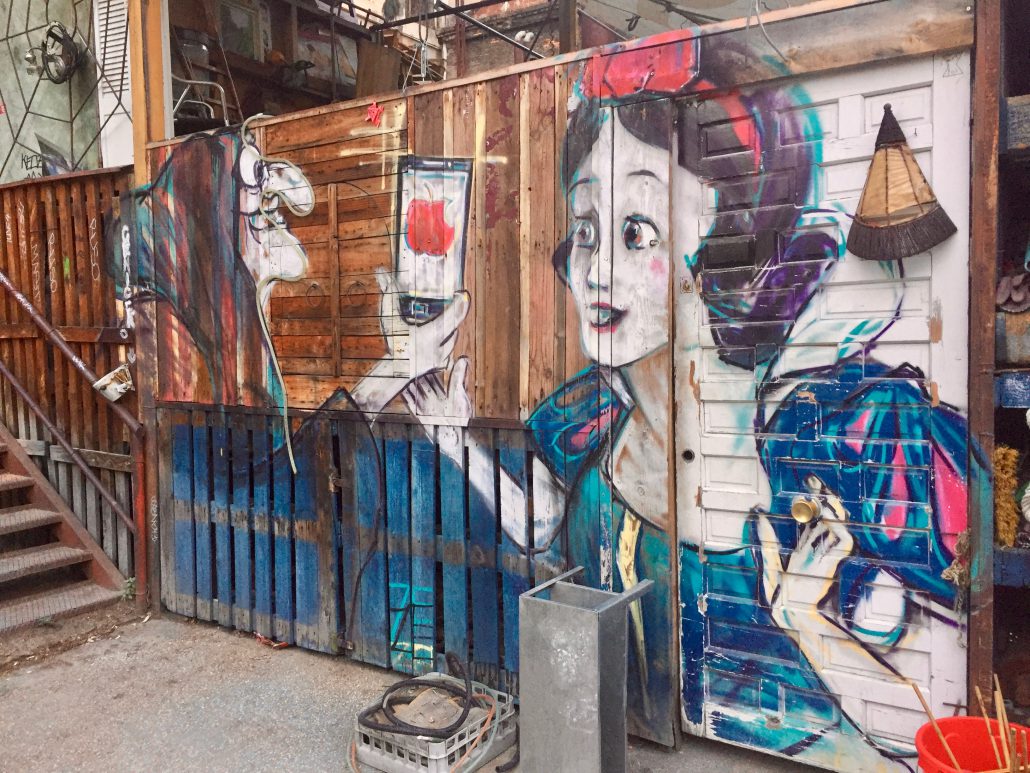

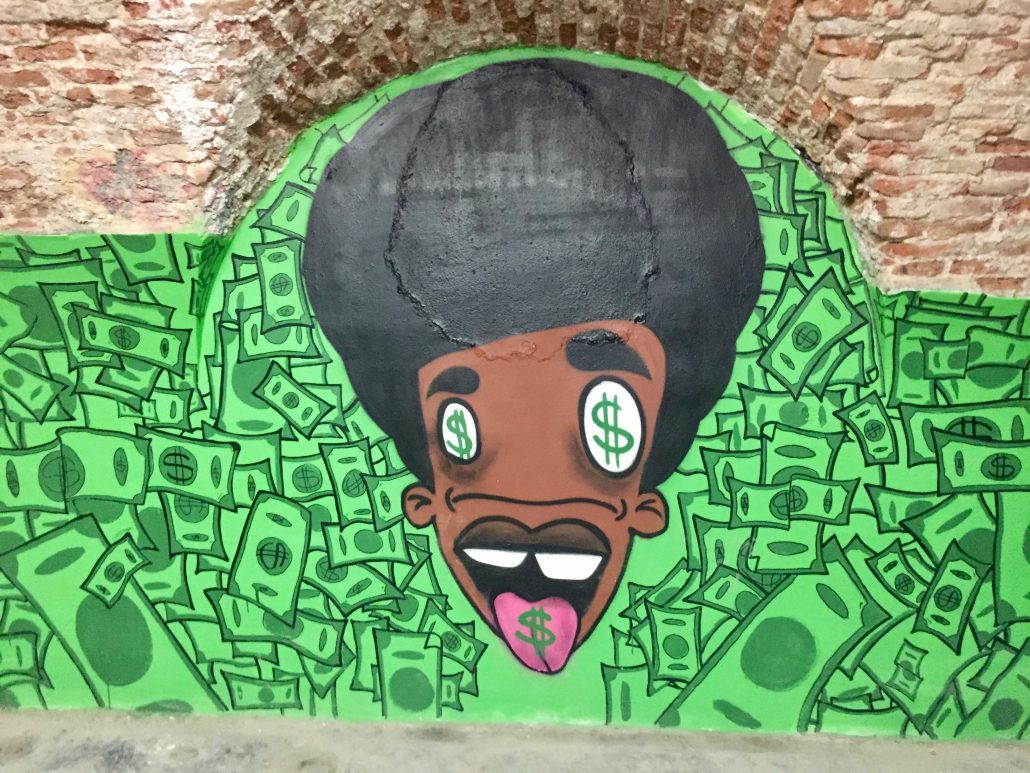
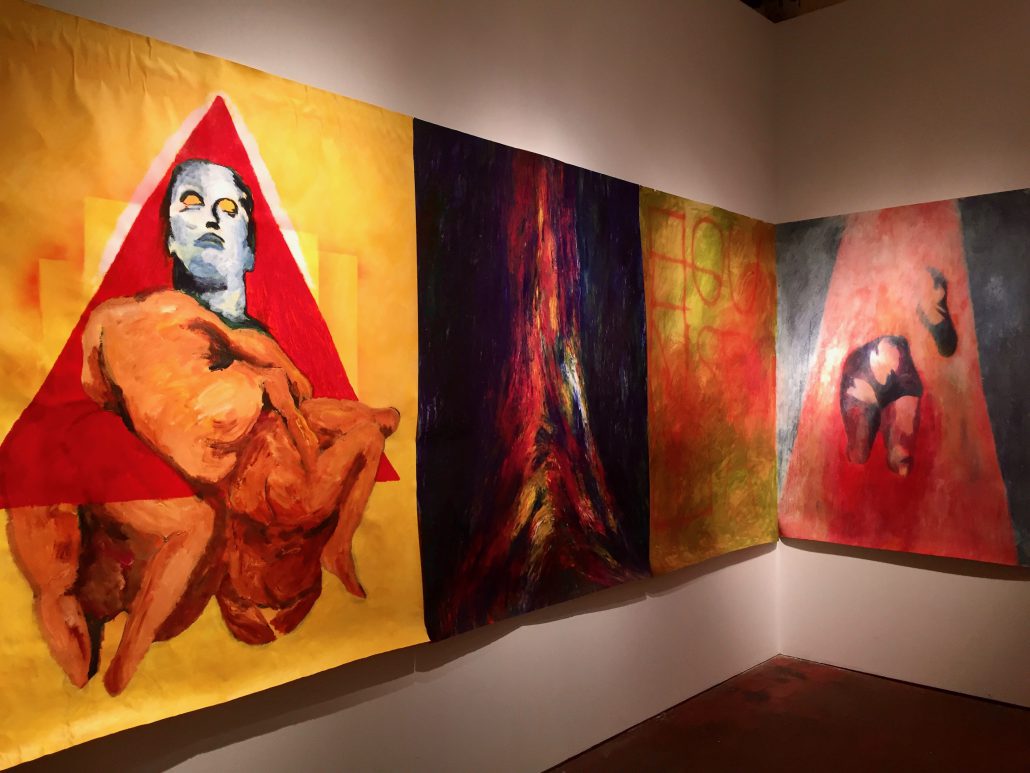
Top: Non-commissioned art on the walls of the warehouse. Bottom: An exhibit from the commissioned section of La Tabacalera
For activity-based hangouts, I frequented La Tabacalera, an old tobacco factory repurposed into a self-cultural center and a managed government-sponsored promotion of art. I could probably go on forever about all these spaces, but my favorite aspects of all of them is the intent behind them.
They were created with the intent of reclaiming the right to the city – or taking back use of public space from higher authorities (such as the city government) and giving it back to the local communities – and governed by a rotating, democratic assembly that promotes an even distribution of power, to keep with the open nature of each space.
These projects created pockets within the city that have a unique personality. They are welcoming, comfortable, innovative. They spark discussion and bring people together from all walks of life. They exist for the enjoyment of the community and they are upheld by the passion of its members – and I think that is something so beautiful that should be present everywhere.
Maybe it’s because I’ve lived in the “UCLA bubble” for the past two years that I cannot bring to mind any similar collective or projects in Los Angeles. I have never experienced anything like this before coming to Madrid, so I am unsure if these collectives are unique to the crisis or unique to large metropolitan cities in general. However, if these collectives exist anywhere near me, I would love to learn more and get involved.
I do not feel at all well-integrated into the larger LA community as of now – my life is on campus. But lacking the campus in Madrid gave me the opportunity to explore the city without a real home base, and as a result, I stumbled across beautiful displays of collaboration and community stemming from a place of desire to craft the city from a grassroots perspective.
I want to go out and explore LA for many reasons, but Madrid’s neighborhood collectives and its overall spread of “hidden gems” have given me one more important reason to explore. It also
makes me wonder which spaces in my life could be repurposed into something else. Where is the dead space, and how can I make it better?
The Negotiating Identities class in general has given me a lot to think about in terms of the roles of public and private space, diversity within groups of people, and overall accessibility to spaces and events. These neighborhood initiatives are a perfect example to show that beauty is born out of crisis. The power of the collective is strong and unique — and as long as there is a group of committed individuals with a shared goal, these initiatives will continue to pop up again and again.
Looking forward, I think I’ll return to LA with a heightened awareness of the urban environment and a coupled ambition to make the city my learning space and my playground.
Gracias por su atención!
Hasta la próxima, Nina
Nina Chikanov studied abroad in Madrid, Spain in fall 2017: http://eap.ucop.edu/OurPrograms/spain/Pages/contemporary_spain_madrid.aspx



